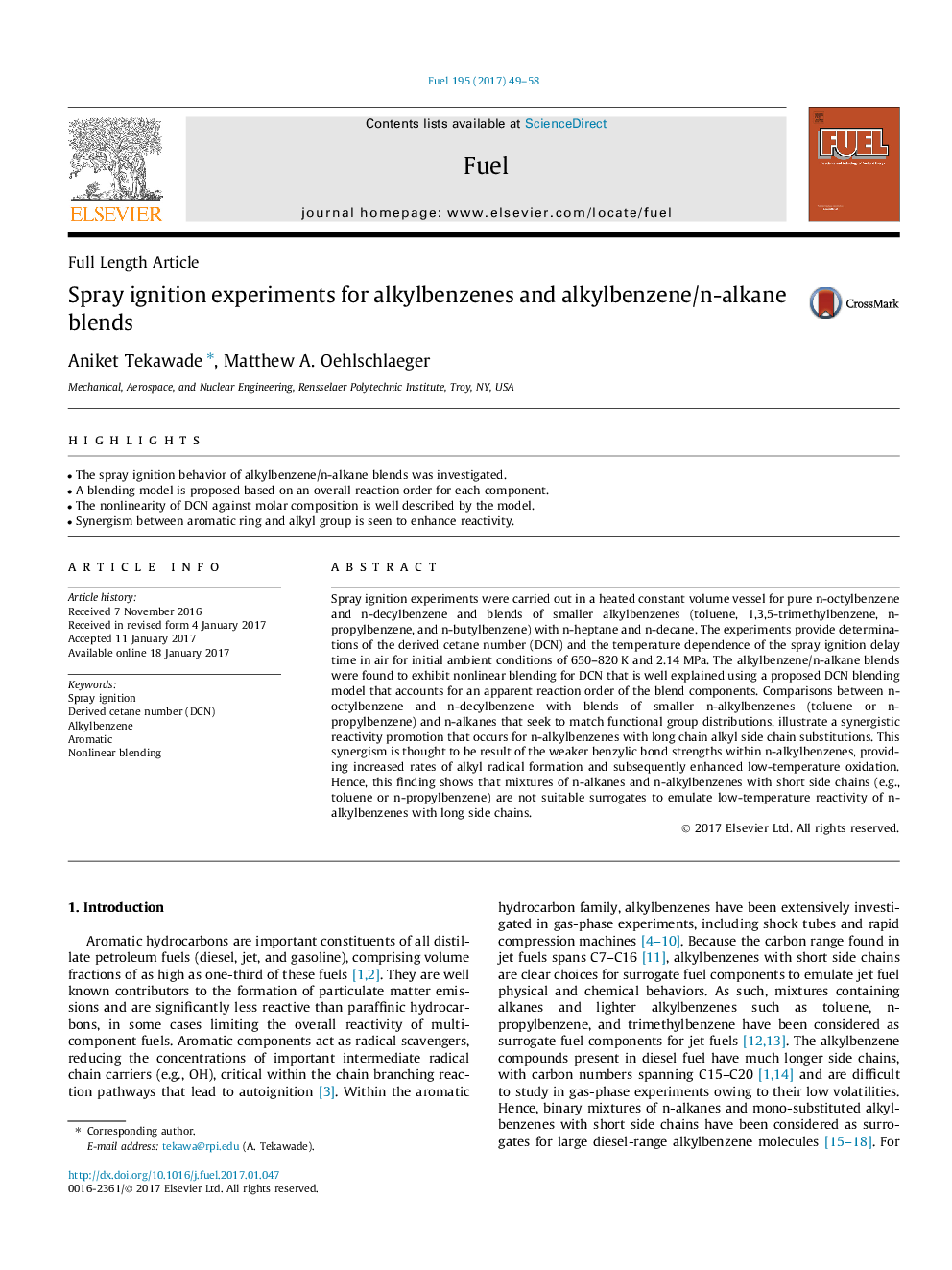| Article ID | Journal | Published Year | Pages | File Type |
|---|---|---|---|---|
| 6475343 | Fuel | 2017 | 10 Pages |
â¢The spray ignition behavior of alkylbenzene/n-alkane blends was investigated.â¢A blending model is proposed based on an overall reaction order for each component.â¢The nonlinearity of DCN against molar composition is well described by the model.â¢Synergism between aromatic ring and alkyl group is seen to enhance reactivity.
Spray ignition experiments were carried out in a heated constant volume vessel for pure n-octylbenzene and n-decylbenzene and blends of smaller alkylbenzenes (toluene, 1,3,5-trimethylbenzene, n-propylbenzene, and n-butylbenzene) with n-heptane and n-decane. The experiments provide determinations of the derived cetane number (DCN) and the temperature dependence of the spray ignition delay time in air for initial ambient conditions of 650-820Â K and 2.14Â MPa. The alkylbenzene/n-alkane blends were found to exhibit nonlinear blending for DCN that is well explained using a proposed DCN blending model that accounts for an apparent reaction order of the blend components. Comparisons between n-octylbenzene and n-decylbenzene with blends of smaller n-alkylbenzenes (toluene or n-propylbenzene) and n-alkanes that seek to match functional group distributions, illustrate a synergistic reactivity promotion that occurs for n-alkylbenzenes with long chain alkyl side chain substitutions. This synergism is thought to be result of the weaker benzylic bond strengths within n-alkylbenzenes, providing increased rates of alkyl radical formation and subsequently enhanced low-temperature oxidation. Hence, this finding shows that mixtures of n-alkanes and n-alkylbenzenes with short side chains (e.g., toluene or n-propylbenzene) are not suitable surrogates to emulate low-temperature reactivity of n-alkylbenzenes with long side chains.
